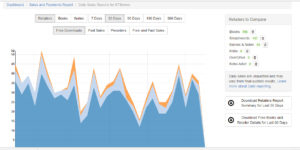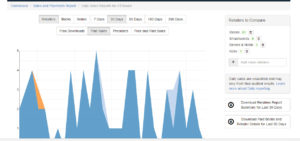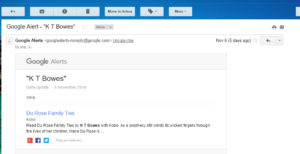
These free novels are just for you.
Take some time out for yourself. You deserve it.
New Zealand or England. Where will you go first?

Take some time out for yourself. You deserve it.
New Zealand or England. Where will you go first?
Self publishing is filled with decisions. It’s a naive author who thinks they can just write, point and press and they’ll be the next big thing. Just. Like. That. Many like Mark Dawson, have thrown their all into Amazon and Kindle Select and made it work. Others like Nick Stephenson advocate widening distribution to Smashwords or Draft2Digital.
There are already myriad choices an author needs to make about the logistics of publishing. Which cover designer? Who’s the best editor out there? Which format uploads best and how do I get my work known? It’s a mine field of decisions which can feel overwhelming, especially when it’s ultimately up to you.
That’s right; nobody can help you.
My personal experience was to publish on Amazon straight out of the gate. I hurtled into the Select program like a thirsty camel, dumped my first three novels in its comfortable folds and ran away to hide. Yeah, sad really. I had the same kind of experience which many newbies have and discovering my hourly statistics on Amazon Author Central did nothing for my confidence.
I joined a writers’ group online and many of them spoke about Smashwords. They were widening the net for readers and seeing some success in terms of reach and royalties. As those are the two things which keep us all writing, I investigated.
What did I find?
You can’t be in Select and distribute to anyone else. It’s an exclusivity clause in return for the free days and benefits which come with being part of the borrowing program that allows you to get paid for every page of your novel read. What I hadn’t realised however, was that Amazon automatically renews your 90 day contract unless you uncheck the box in the KDP screen. I ended up stuck in Select for another few months. Back then, you didn’t get paid for page reads like you do now so it was a time of humming to myself lots and wishing I’d unchecked the box at the very start. I wish instead that I had used my time more wisely.
I learned that Smashwords could distribute my novels to iBooks through Apple, Nook through Barnes & Noble, Kobo and numerous other retailers. So, I eagerly awaited my moment of glory as the hours ticked by to the end of my Select contract period. I had the book page loaded on Smashwords just waiting for me to upload the document. As the clock ticked into a new day and my novel gained freedom from Amazon’s clutches – in it went to a glorious new future.
The Meatgrinder is a tool which Smashwords uses to verify that uploads meet the exacting standards of its retailers. It choked on my work. Yeah. Choked on it and then spat it out.
Had I paid attention to their very clear blurb, I would’ve noticed I needed to use their Style Guide first. So then I choked too. Many authors bemoan the Meatgrinder and Style Guide complaining about how hard it is to format books to their standards. Not true.
The best few hours I ever spent formatting a book was with Mark Coker’s Style Guide in one hand and my document in the other. Yes, it took time. Yes, it was a delay. Yes, I am a technical moron but yes, I learned things about Microsoft Word I never knew. I formatted my novel, About Hana to fit the guide. Then I set up a document style which from then on, I would always write into. It’s actually that easy. 20 books later and I’ve stayed writing in that format and rarely had a problem uploading. It also corrected some weird formatting issues that even Amazon was picking up. All that heartache stopped.
So the thing to remember about the Style Guide is that once you’ve read it, you want to implement it. If that becomes your normal, you need never go through the pain of nuking a document for publication again. If you’re interested, here’s the link to the Smashwords Style Guide and it’s FREE! Do everything it says on the tin. You’ll rarely fallout with the Meatgrinder or have a half chewed manuscript spat out at your feet.
I’d be lying if I said I wasn’t daunted by the idea of leaving Amazon’s cozy blanket of love and branching out into the big wide world of independent publishing. But I did it anyway. If I’m honest, for the first year with three books in a trilogy on offer, I didn’t do very well on Smashwords. When I look back, it was as much the fault of the dumb ass categories and keywords I picked at random, as the fact I was a newbie.
But then I ran a few adverts on my first in series free download, both on Amazon and Smashwords and got noticed. I’ve never looked back and wouldn’t even consider going back to having one place to sell in. The upheaval recently with Amazon reporting has only strengthened my belief in widening my horizons. More distribution outlets equals more readers. Some of my biggest, tambourine banging fans have come from Apple and that’s another really good reason. I love iBooks buyers; they’re just a whole different level of enthusiastic. More distribution outlets means that when one decides to pull the plug on your genre or mess up their reporting so you get no page reads for a whole month, you can still pay the power bill or buy some cheese. That was me last month. As other authors set to with gnashing of teeth and wailing, I cruised through with slightly lower stats but then meh, I still had Smashwords.
So, here’s where the rubber meets the road. I will show you my sales dashboard for the last 30 days on Smashwords and chunk it up by retailer. Just so you know, I’m not a bad ass author who employs hundreds of people to market my stuff, but nor am I someone with a full time job who counts my book sales at one or two a month and spends the royalties on wine to celebrate my success. I did however used to be the latter. I’m just a middling, hobbyist publisher with 20 books out who works part time at a job I love and don’t expect to be on The Ellen Show anytime soon.
I have 3 books as permafree so here is the screenshot of the last 30 days in Smashwords downloads with no advertising.

In case you can’t quite see it, it shows that 786 people downloaded in iBooks, 147 in Smashwords and 49 in B & N
Below are my paid sales in the last 30 days without advertising. Now, I know there are authors earning six figures out there and they would snort in disbelief at my celebration of a mere 2 books a day in sales. But at 60% royalty across the board (Amazon only pays 30% for many of its markets) these are earnings in addition to what I earn from Amazon sales. Smashwords very kindly pays via PayPal so there’s no messing around with cheques and bank accounts and they pay royalties quarterly. My last quarterly payment rounded up to a very nice $1000 US which converted favourably to NZ dollars.

That’s 61 sales in iBooks, 3 in B & N and 1 in Kobo of which I got 60% royalty
I do very little to earn this money apart from write, publish and repeat. So imagine my surprise this week to see that Kobo had decided to advertise my latest pre-order themselves. Now, I don’t do a heap of sales through Kobo so I thought that was very sweet. But it just goes to show that those readers who bought the other 8 books of my Hana Du Rose Mysteries are being told there’s another on its way. I’ve seen the same sorts of thing from Apple and B & N.

Why indeed? I’ve heard the complaints about lack of success on their platform and books just sitting there and I know, for a long time I wrote Smashwords off and forgot my books were even there. When a $500 payment suddenly hit my PayPal account I spent ages trying to work out where it could’ve come from and then spent even longer assuming it was a mistake and trying to give it back. You have to be patient with it – more so than Amazon, I feel. You need to include the links to books on Smashwords and its other distributors every time you run an advert and you need to feed the beast by writing more books for readers to find.
One reason for sticking with Smashwords, aside from the ones listed above is the quality of the help their staff offer. Whenever I contact Amazon, no matter what the issue is, I receive a cut and pasted dollop of their terms and conditions, even if it’s unwarranted. They’re robotic and monotonous and definitely not human most of the time. When I click the help button in the Smashwords dashboard, I get an email from a real person. They spin on their heads to help me when my Table of Contents gets stuck in the Meatgrinder for the fifth time and use sentences which include LOL, which proves they’re real people. Nice, real people.
Another reason is a personal one. My first eReader was a Sony which my father gave me. Back in the day it was hard to get Amazon to work on it and I was stuck in Sony’s limited collection of books. All the good stuff was over on Kindle and because Amazon has such a stranglehold on the industry, I had to pay up to 50% more for buying through Sony. It sucked. I want my books to be available for everyone, however they read, be it on their laptop, tablet, eReader or phone. I also keep my prices the same as Amazon because there’s no bigger insult than a reader feeling ripped off and prejudiced against just for not dancing with the big players.
I have nothing against Amazon. They’ve been pretty good to me as an author and when everything’s going right and I don’t have to contact them, they’re easy to work with. They have a great platform and the Kindle Select program is genius. They just aren’t the only distributor out there and it’s worth remembering that. Nick Stephenson was preaching diversity long before the Amazon algorithms ate everyone’s profit a few weeks ago and he was right. For every author who staunchly sticks with one player and declares them the winner, there is another who’s pushed their net wider and either failed or succeeded.
For authors outside the USA your only issue with selling through Smashwords is their need to have physical sight of your ITIN number from the IRS. Amazon seem happy to accept a digital signature from those in Europe and beyond who don’t reside in the US and that’s a new thing exclusive to them. When I started out I applied to the IRS to give me a number to commute my 30% US Tax down to 5% and the hit to my royalties was painful in the interim. Smashwords might have a new system in place so it’s worth checking with them before you jump in. It’s my personal belief that for your own safety, you need an ITIN number anyway. If the US tax office decide not to accept the digital signature suddenly, you’re royalties will be shrunk by a third overnight. If you’ve got an ITIN number already, what’s stopping you?
Whichever you choose, may the odds be ever in your favour. Go hard or go home.
K T Bowes is the writer of 20 plus girly mystery books which are not for boys. She is English but sneaked into New Zealand when immigration laws were slack and has been there ever since. She can’t sing and has the coordination of a blind hippo but people say she can write okay. If you want to check out her books and snag a free one just to see if you like it, you’ll find them HERE
I agree wholeheartedly. Draft 2 Digital is excellent too. Amazon is a great start, but as an author, your best bet is to branch out.